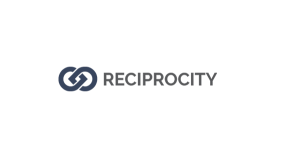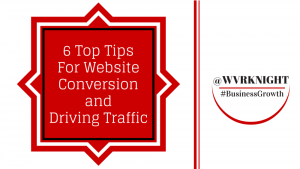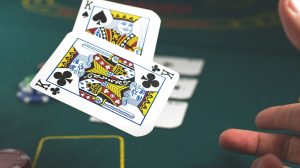— August 23, 2017
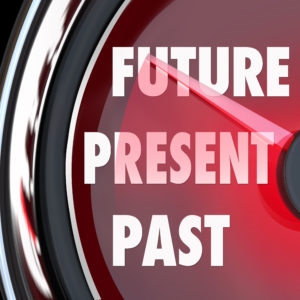 Your Business Story
Your Business Story
So I want to talk about the story of your business. Now, this is not for every business, because we all have varying degrees in the way that we sell, who our customers are, and what it is that we provide. So, I just want to lay out a couple of concepts for you. This is what I call the story of the little c and the Big C, and the story of the little b and the Big B. I will explain those, and I’m not talking about a buzzing bee. I’m talking about business.
The “little c” and “Big C”
So let’s start out talking about the little c and the Big C. In business, we all sell different things. Some of us sell products, some of us sell services. Some of us have a combination of products and services. But in my world, and in a lot of peoples’ worlds, there is the little c, which is what I consider to be cash, which is a sale of little resistance, a lot of times. You have no problem going to an ATM, or going to a farmer’s market, buying bread and cheese, honey and wine, or whatever it is, and you’re usually paying with cash. These are things that you want, that you need, and there’s relatively little resistance to doing something like that.
One of the examples in my business is that I have coaching programs, which are in the thousand dollar range, but I also have books. I sell these books for $ 20 or $ 10 when I’m speaking live. When I’m speaking, I have this opportunity to say, “Hey, I’ve got books in the back of the room, come buy this.” People will generally whip out a $ 20 bill, a $ 10 bill. They may even give me their credit card. But it’s a very little resistance kind of sale. So the question is, “Do you have something that you can amass a chunk of sales?” I look at this as multiple streams of income. This stream of income is selling books.
Now, when we look at the Big C, that is credit cards and checks. So when you’re selling something that is maybe $ 100, $ 1,000, $ 10,000 —whatever it is that you’re selling — there’s a lot more resistance to pull out that credit card or write that check because it doesn’t have the same feeling as the small c. Yet it’s absolutely imperative that you learn how to sell those Big C’s. It takes a little bit more time and a little bit more energy, and it takes somebody specific who wants to pay for what it is that you’re selling. Yeah, if your air conditioner goes out, it’s a Big C. It’s roughly $ 5,000 to get a new air conditioner. You’re either going to have cash sitting in the bank where you can write a check, or you’re going to pull out a credit card. But there’s a lot of resistance to that because it’s such a big expense.
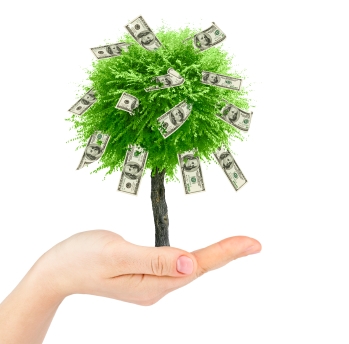
The same thing goes in our businesses. If you’re selling big ticket items, like coaching programs or what have you, there’s going to be a little bit more resistance to something like that. So the little c is building up a series of simple sales that you can do that augment, and I’ve got some of those. I even do website maintenance only for the clients whose websites I’ve done, for $ 20 a month and it’s a subscription service, meaning that every single month, people have their credit card debited, but it’s still a little c. It’s not something that is huge that they’re paying for all the time.
Another little c in my business is my Bacon Weekly Mastermind. It starts out at a dollar and then goes up to $ 47 for four coaching calls. People don’t have a problem with that. They’re more than happy to spend $ 47 to grow their business, especially when they’re getting advice and they’re learning things. It’s like buying two books and reading them, but we do it every single week. So you’re constantly getting educated in new technologies, new software, new techniques, and even some thought processes or mindset things. So that’s the Big C and the little c.
The “little b” and “Big B”
Now, let’s go to the Big B and little b. I’ll start with the little b. In my world, and in a lot of peoples’ worlds, when you’re selling B2B (business-to-business), you’re selling to businesses who are trying to expand and grow and do the things that they’re doing. I look at the little B as companies, people or solopreneurs that are making $ 50,000 a year or less. Most of the time in the business world, whatever a solopreneur or entrepreneur makes, they’re going to end up having maybe half of that to be able to pay themselves. When you’re done with all your expenses and all the things that you have to do, you may have a little more, but generally 50% is a good number.
So, when you’re making $ 50,000 a year, which is not a lot of money in all cases, and you start taking away the expenses of your phone and your car and the other things that you can maybe deduct, you get a little bit of that back, but still they’re expenses. It’s money that you got to put out on a regular basis. At $ 50,000, most people’s gross income is going to be about $ 25,000 and the rest is all going to go to expenses. Out of those expenses, it’s roughly $ 2,000 a month to run their business, and when you start paying for Internet, computers, software, whatever it is that you’re doing, that’s not a lot of money. So the amount of income that they have to spend on larger things diminishes.
Now, the Big B is businesses that are making a $ 100,000 or more. We’ve had this discussion a handful of times in different mastermind groups and it’s an arbitrary number: $ 50,000, $ 100,000. There are people that are in-between who want to grow from that 50 to that 100. We get that. You should get it, too. But chances are, people that are making $ 100,000 are making $ 50,000 as payroll and they have $ 50,000, or roughly $ 4,000 a month, to spend on whatever it is. Those are the clients that are going to be more interested in the high ticket items. So they’re willing to spend and invest in themselves, invest in their business. Those are the people that are probably going to be able to afford higher level coaching, higher level services, and things that maybe you want to be able to sell them.
Final Thoughts
So the little c and the Big C represent cash versus credit and checks… It takes a lot more energy to write a check than it does to whip out a twenty. The little b and the Big B represent the people that are just getting by to the people that are creating critical mass in their business. They’re growing and they’re willing to invest in themselves. Now keep in mind, there are manufacturing companies out there making a million dollars that don’t have enough active income to be able to invest in anything because all their money is going back to inventory or stock or what have you.
So those are some indicators of the question you’ve got to ask: Who is my client base? If I only have a little c product, a $ 20 product, then I’ve got to sell a lot of them to make some kind of business out of it. If I have a Big C type business, then I can sell less. If you’re dealing with the small b people, you have to have products that are going to match their expectations and still serve them, and then if you’re dealing with the Big B, you have to make sure that what you are selling is aligned with their needs.
I am sure you have thoughts and comments on this subject. Comment below and share your experiences with how each of the above effect and work in your business and how they combine to serve your customers!
Business & Finance Articles on Business 2 Community
(38)
Report Post

